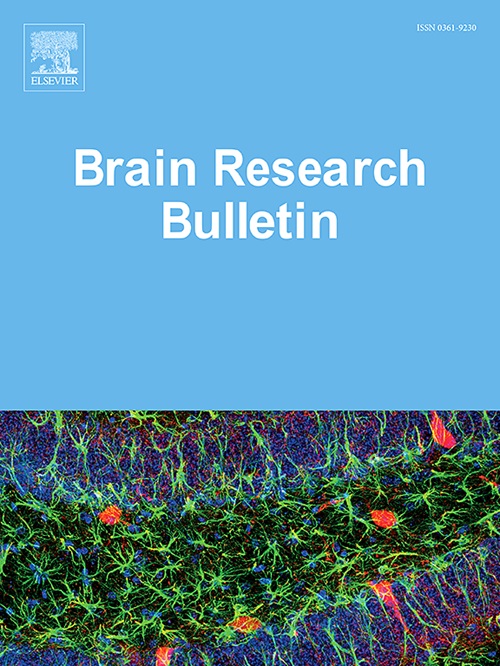Neuroprotective effects of bone marrow mesenchymal stem cells combined with mannitol on radiation-induced brain injury by regulating autophagy via the PI3K/AKT/mTOR signaling pathway
IF 3.5
3区 医学
Q2 NEUROSCIENCES
引用次数: 0
Abstract
Background
Bone marrow mesenchymal stem cells (BMSCs) have demonstrated potential in the treatment of radiation-induced brain injury (RIBI); however, the presence of the blood-brain barrier (BBB) limits their therapeutic efficacy. Additionally, the precise mechanisms behind the use of BMSCs in treating RIBI are still not well understood. This study aimed to investigate the therapeutic efficacy of mannitol and BMSCs on neuronal autophagy and their efficacy in treating RIBI.
Methods
In the study, RIBI models were first established in male Sprague-Dawley (SD) rats. Evans blue staining was performed to examine how mannitol influences BBB permeability in RIBI. We isolated BMSCs from SD rats using the whole bone marrow adherent method and assessed their adipogenic and osteogenic differentiation potential through Oil Red O and Alizarin Red S staining; flow cytometry analysis assessed cell surface markers. Prussian blue staining was employed to verify the migration of iron-labeled BMSCs into brain tissue. The rats were then divided into specific treatment groups, and model establishment followed according to experimental conditions. The body weight of the rats was measured weekly throughout the study. Cognitive function was assessed using the Morris water maze test. H&E and Nissl staining were applied to evaluate hippocampal neuronal survival. We quantified key proteins in the PI3K/AKT/mTOR signaling pathway by Western blotting, and quantified autophagy-related proteins LC3B and beclin-1 using both Western blotting and immunofluorescence.
Results
Mannitol treatment significantly increased BBB permeability and promoted BMSCs migration. The combination of BMSCs and mannitol improved cognitive and memory functions, leading to better body weight recovery compared to the BMSCs group. H&E and Nissl staining also revealed a significant increase in neuronal survival within the combined treatment group. Furthermore, we observed through Western blot and immunofluorescence analyses that combination of BMSCs and mannitol enhanced the activation of PI3K, AKT, and mTOR through phosphorylation, while it reduced the expression levels of LC3B and beclin-1.
Conclusion
The combination of BMSCs and mannitol treatment significantly improved cognitive function and hippocampal neuronal survival in RIBI rats. This effect was achieved by increasing BBB permeability, facilitating BMSCs migration to the injured region, and regulating excessive autophagy through the PI3K/AKT/mTOR pathway. This combined treatment demonstrated a neuroprotective effect superior to that of BMSCs treatment alone.
求助全文
约1分钟内获得全文
求助全文
来源期刊

Brain Research Bulletin
医学-神经科学
CiteScore
6.90
自引率
2.60%
发文量
253
审稿时长
67 days
期刊介绍:
The Brain Research Bulletin (BRB) aims to publish novel work that advances our knowledge of molecular and cellular mechanisms that underlie neural network properties associated with behavior, cognition and other brain functions during neurodevelopment and in the adult. Although clinical research is out of the Journal''s scope, the BRB also aims to publish translation research that provides insight into biological mechanisms and processes associated with neurodegeneration mechanisms, neurological diseases and neuropsychiatric disorders. The Journal is especially interested in research using novel methodologies, such as optogenetics, multielectrode array recordings and life imaging in wild-type and genetically-modified animal models, with the goal to advance our understanding of how neurons, glia and networks function in vivo.
 求助内容:
求助内容: 应助结果提醒方式:
应助结果提醒方式:


